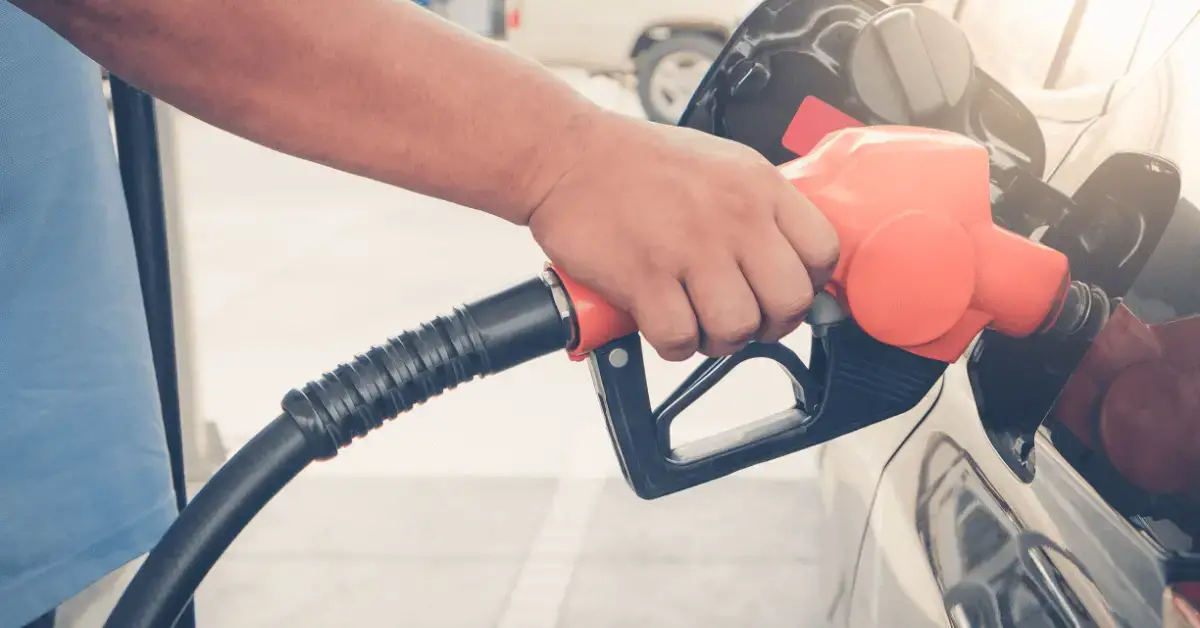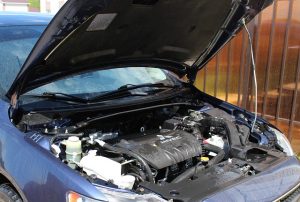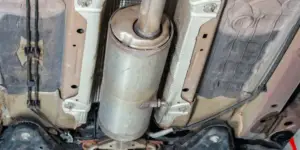
So, it happened. Whether you were sleep-deprived or distracted, you mixed up the cans and accidentally poured power steering fluid into your gas tank. Before you panic and rush to the nearest mechanic, there are several things that you can do to ensure peace of mind after putting steering fluid in sa fuel tank.
If you put power steering fluid in your gas tank by mistake, this fluid is made from petroleum oil and won’t damage your engine. In small doses, you don’t need to drain your tank. Just fill it up with gas and let the oil burn off. You may want to siphon out larger amounts and clean your reservoir if you dumped in a significant amount compared to the gas level.
Check out the top 3 steps to take if you accidentally put power steering fluid in your gas tank.
What to Do If You Put Power Steering Fluid In Your Gas Tank

- Remove some fluid from the fuel reservoir and clean the tank.
- Add gas to the tank.
- Drive as usual and let the power steering fluid burn off naturally.
Step 1: Siphon Out the Gas Tank
It’s important to know that power steering fluid is a light, petroleum-based hydraulic oil that is like diesel. The main difference is that steering fluid is more viscous, thick, and sticky than diesel fuel. This means that putting steering fluid in the fuel tank is similar to adding engine oil to the tank.
If you accidentally poured a bunch of steering fluid into your gas tank, this is unlikely to damage your car. Instead, the oily fluid will give your valves, chambers, and fuel system some extra lubrication.
You probably won’t even notice any difference except slightly enhanced performance if you just added a small amount. If you had sufficient gas in the tank and only put a small amount of power steering fluid in the tank, then you don’t need to worry about siphoning out the fluid. For example, even if you put in a 16-ounce bottle of fluid, if your tank is almost full, then this shouldn’t cause any problems at all.
If your tank was almost empty when you poured in a lot of power steering fluid, then this will make your fuel too oily. This is likely to prevent combustion in the cylinders from firing and stop your engine from starting.
Removing Gas from the Fuel Tank
In this case, if you know how to siphon gas out of a fuel tank properly, do this to remove the remaining fluid from your gas tank. Keep in mind that most modern cars will have an anti-siphon feature, but there are safe ways to circumvent this to clean out your tank.
If you aren’t sure what to do or don’t have a proper siphon hose and your car is still drivable, you can take your car to a mechanic to do this.
In most cases, you won’t need to siphon out the fluid if you have enough gas in the tank and didn’t add a ton of fluid. If you’re still worried about it, you can drain the gas tank and clean it with old-fashioned soap and water. If you know what you’re doing, you can also clean your fuel system, lines, and injectors by putting the cleaner in the gas tank and starting the engine. You can also invest in a fuel-system cleaning kit or take your car to a qualified mechanic for a thorough flush.
Step 2: Refill the Tank with Gas
The next step to take if you put power steering fluid in your gas tank is to add more gasoline. This will help dilute the unwanted power steering fluid so that it doesn’t cause any symptoms.
It’s a lot of work to drain a tank and clean the fuel system, so if you didn’t add too much power steering fluid, you can correct the situation by just filling up the tank.
It is best to add gas from a can to the tank instead of driving to the gas station. If you’re out of gas, have someone drive you to a gas station. There you can fill up enough cans to reload your gas tank. Once you have refilled your gas tank, drive the car as usual until the gas tank runs empty.
If you already drove the car after adding power steering fluid to the tank, don’t worry. At worst, your engine will just stall until you top the tank off with more gas. In most cases, you may just notice a slight change in performance.
Step 3: Start the Engine and Let the Fluid Burn Off
The final thing to do if you accidentally poured power steering fluid in your gas tank is to drive your car.
Your fuel system will just treat a small amount of power steering fluid like an impurity in the gas tank and get rid of it by burning it off. This means that your emissions will be higher than normal. You will also likely notice some blue smoke as the fluid mixes with the gas and burns up.
If you notice too much smoke or the engine bogs down when starting, this means that there is too much fluid compared to gas in the tank. Make sure to siphon and clean the tank before adding more gas. Then you can start the car again.
If you accidentally added some power steering fluid to a diesel vehicle, you’re unlikely to notice any effects at all. However, if you add a lot of fluid to a low gas tank, you will see similar results to a gasoline-powered engine.
Frequently Asked Questions
What Happens if I Put Steering Fluid in My Gas Tank?
Since power steering fluid is a petroleum-based oil, it won’t harm or destroy your engine if added in small quantities. At the most, it can coat your catalytic converter pellets and cause some smoke when you start the engine. After you add a tankful or gas or two, any remaining steering fluid should burn off without any problem.
Do I Need to Drain a Gas Tank if I Put Power Steering Fluid in It?
If you only added a small quantity of power steering fluid, just fill up the tank and drive it normally. You may notice your vehicle operating smoother if a small amount is added to the fuel tank. Once the tank drops to a low level again, clean your fuel system to get rid of unwanted fluid.
Can I Use Steering Fluid as a Gas Additive?
Yes, it is possible to add small amounts of power steering fluid to fuel to enhance performance. For example, some people use power steering fluid as a fuel additive to help clean and lubricate the various chambers located in a car engine.
While most mechanics don’t use power steering fluid as a gas additive, some use transmission fluid as an engine chamber lubricant. This means that you could use small quantities of power steering fluid in your gas tank. This will help increase your car’s engine performance. You may also notice increased gas mileage as a result.
Just ensure that you don’t add too much steering fluid to the fuel tank. Make sure that your tank contains far more gas than fluid to ensure that your engine still functions efficiently.
Final Thoughts
If you put power steering fluid in the gas tank by mistake, nothing bad will happen to your car. Some mechanics even add steering fluid to the gas tank as a fuel additive. This helps clean out and lubricate the car’s fuel injectors and chambers in the engine. Don’t worry if you notice some blue smoke when you start the car. This is a normal reaction that will soon burn off.
Adding too much power steering fluid to an empty gas tank can mess with your car’s combustion process. This can cause the engine to shut down upon starting. In this case, it’s best to siphon out as much fluid as possible before adding more gas.
While this can seem like a scary mistake, it shouldn’t cause any problems for your car in the future.













